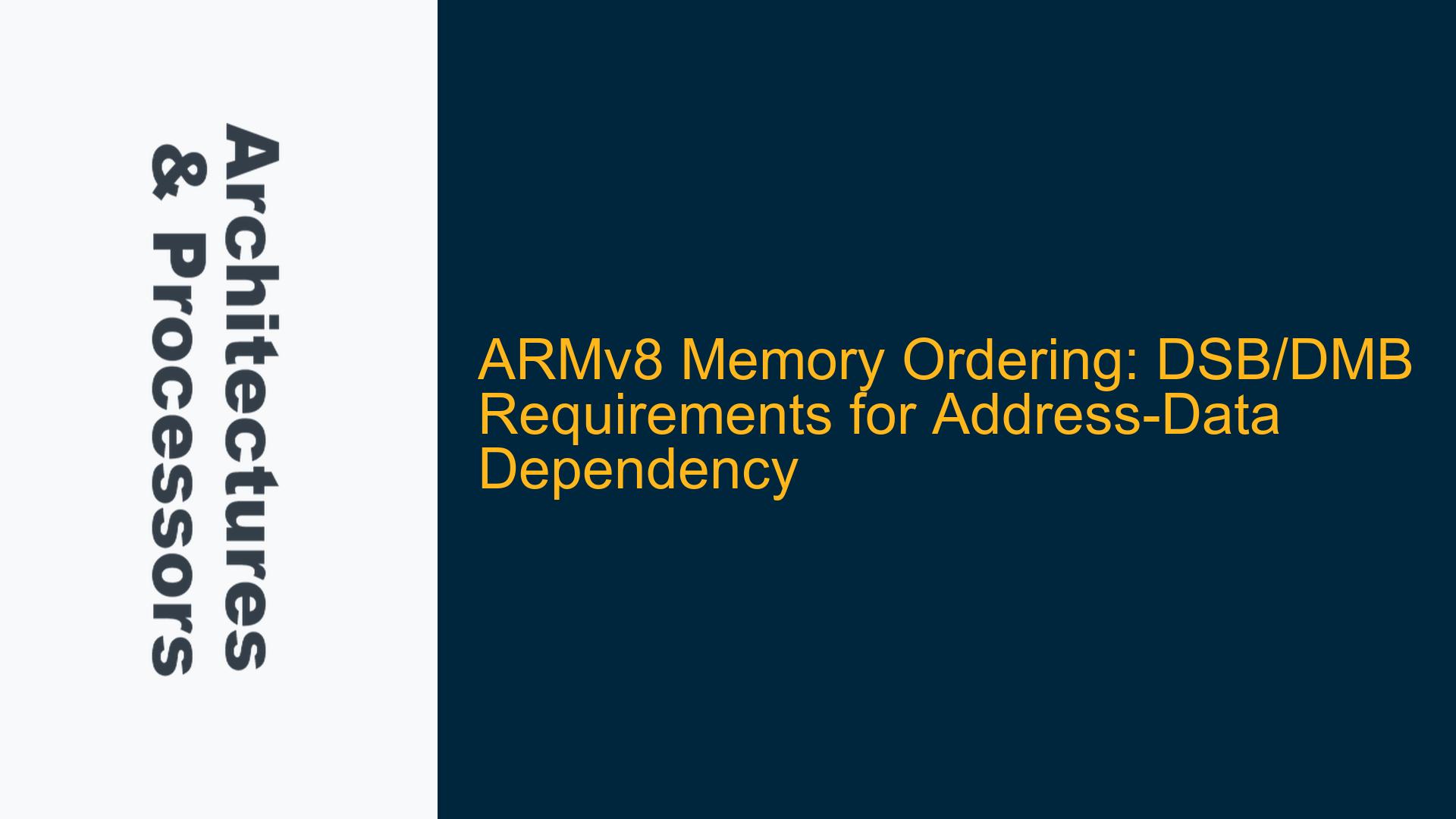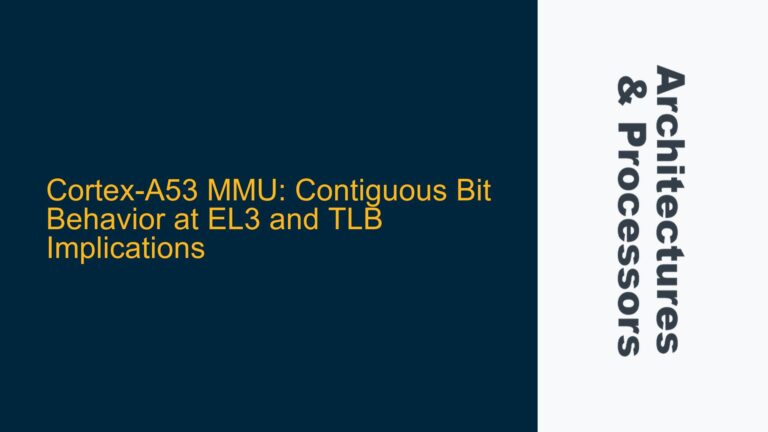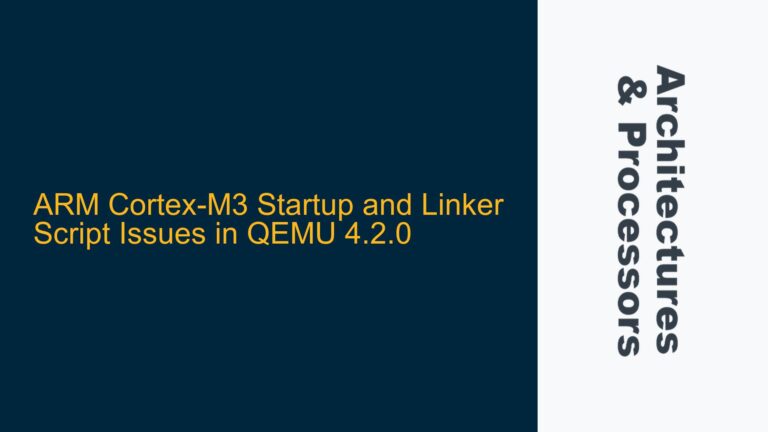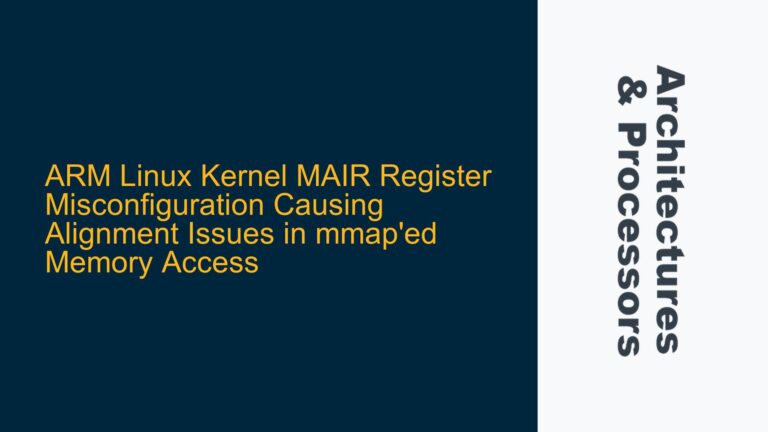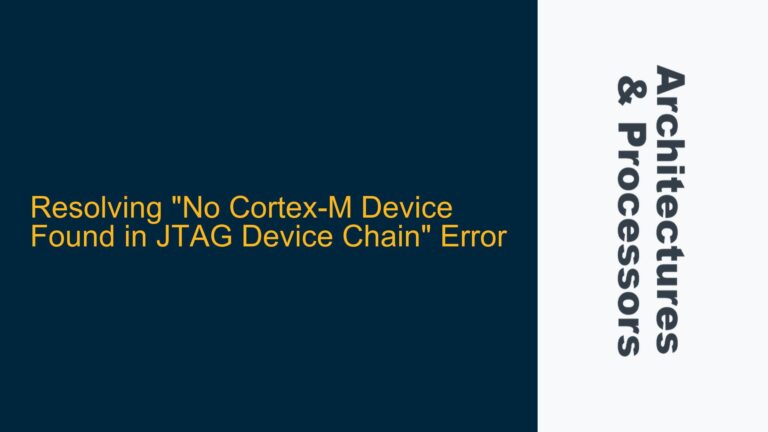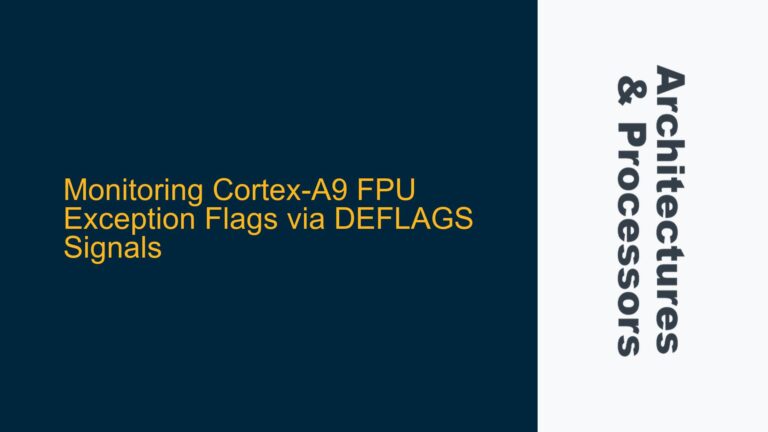ARMv8 Weak Consistency and Address-Data Dependency in Memory Operations
ARMv8 architecture employs a weakly consistent memory model, which allows for out-of-order execution of memory operations to optimize performance. This means that the processor may reorder memory accesses unless explicit synchronization instructions, such as Data Synchronization Barrier (DSB) or Data Memory Barrier (DMB), are used to enforce ordering. The core issue here revolves around whether DSB or DMB instructions are necessary between a write to an address and a subsequent read from the same address when there is an address-data dependency.
In the scenario described, the sequence of operations involves reading from address B, writing to address A, and then reading from address A. The question is whether the ARMv8 processor guarantees that the read from address A will always observe the value written to address A in program order, or if a DSB/DMB is required to enforce this ordering. This is particularly relevant when address A is in Normal memory and the operations are performed by the same Processing Element (PE).
The ARMv8 architecture defines memory types such as Normal memory and Device memory, each with different attributes regarding ordering and caching. Normal memory is typically used for general-purpose data storage and allows for reordering of memory accesses unless explicit barriers are used. Device memory, on the other hand, is used for memory-mapped I/O and has stricter ordering requirements. Understanding the memory type is crucial for determining the need for synchronization barriers.
Memory Type and Simple Sequential Execution Model
The ARMv8 architecture follows the Simple Sequential Execution (SSE) model for Normal memory, which guarantees that a single PE will observe its own memory operations in program order. This means that if a PE writes to address A and then reads from address A, the read will always observe the value written by the write, provided that both operations are to Normal memory and there are no intervening synchronization issues.
However, this guarantee does not extend to interactions between multiple PEs or when dealing with Device memory. In the case of Device memory, the memory system may not guarantee the same ordering, and explicit barriers may be required to ensure that writes are visible to subsequent reads. The distinction between Normal and Device memory is critical in determining whether DSB or DMB instructions are necessary.
In the specific scenario described, where address A is in Normal memory and the operations are performed by the same PE, the ARMv8 architecture ensures that the read from address A will observe the value written by the preceding write to address A. This is because the SSE model guarantees that the PE will observe its own memory operations in program order. Therefore, in this case, no DSB or DMB is required between the write to address A and the subsequent read from address A.
However, if address A were in Device memory, the situation would be different. Device memory has different attributes, and the memory system may not guarantee the same ordering as Normal memory. In such cases, explicit barriers may be necessary to ensure that the write to address A is visible to the subsequent read from address A. The need for barriers in this context depends on the specific attributes of the Device memory and the requirements of the system.
Implementing Synchronization Barriers for Robust Memory Ordering
While the ARMv8 architecture provides guarantees for Normal memory under the SSE model, there are scenarios where explicit synchronization barriers may still be beneficial or necessary. For example, if the system involves multiple PEs or if the memory operations involve Device memory, barriers may be required to ensure correct behavior.
In the case of multiple PEs, the ARMv8 architecture provides mechanisms for ensuring memory coherence and consistency across PEs. These mechanisms include the use of DSB and DMB instructions to enforce ordering of memory operations. A DSB instruction ensures that all memory accesses before the barrier are completed before any memory accesses after the barrier are executed. A DMB instruction, on the other hand, ensures that memory accesses before the barrier are observed in the correct order relative to memory accesses after the barrier, but does not necessarily wait for the accesses before the barrier to complete.
When dealing with Device memory, the need for barriers is more pronounced. Device memory typically has stricter ordering requirements, and the memory system may not guarantee that writes are immediately visible to subsequent reads. In such cases, a DSB or DMB may be necessary to ensure that the write to address A is visible to the subsequent read from address A. The specific barrier to use depends on the requirements of the system and the attributes of the Device memory.
In summary, for the scenario described, where address A is in Normal memory and the operations are performed by the same PE, no DSB or DMB is required between the write to address A and the subsequent read from address A. The ARMv8 architecture guarantees that the read will observe the value written by the write under the SSE model. However, if address A were in Device memory or if the system involves multiple PEs, explicit barriers may be necessary to ensure correct behavior.
To ensure robust memory ordering in ARMv8 systems, it is important to understand the memory types involved and the guarantees provided by the architecture. When dealing with Normal memory and a single PE, the SSE model provides sufficient guarantees, and no additional barriers are required. However, when dealing with Device memory or multiple PEs, explicit synchronization barriers may be necessary to ensure that memory operations are observed in the correct order.
In conclusion, the need for DSB or DMB instructions in ARMv8 systems depends on the memory type and the specific requirements of the system. For Normal memory and a single PE, the ARMv8 architecture provides sufficient guarantees under the SSE model, and no additional barriers are required. However, for Device memory or systems involving multiple PEs, explicit synchronization barriers may be necessary to ensure correct memory ordering. Understanding these principles is crucial for developing robust and efficient ARMv8-based systems.
